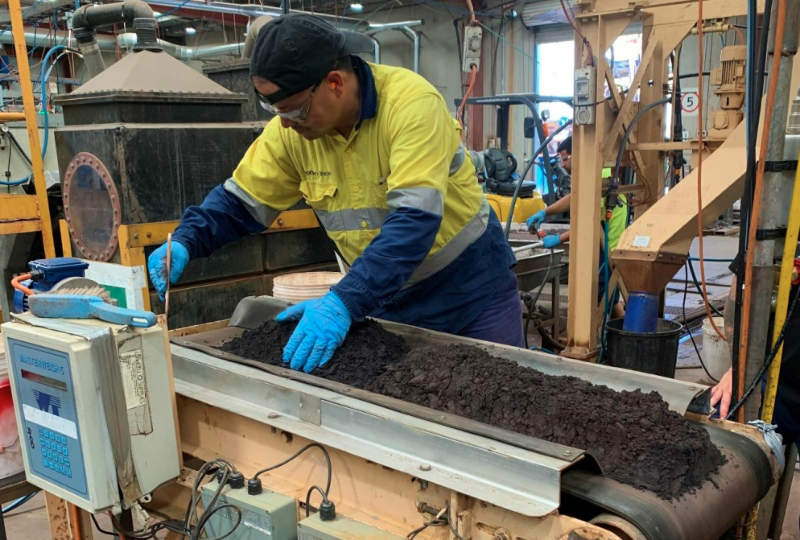Australian Vanadium shows its muscle with high recoveries

Pic: Bloomberg Creative / Bloomberg Creative Photos via Getty Images
Special Report: Australian Vanadium’s pilot-scale test work has achieved high vanadium recoveries with consistent concentrate qualities.
The recovery of 76 per cent of the vanadium within a concentrate grading 1.37 per cent vanadium pentoxide (V2O5) and 1.83 per cent silicon oxide (SiO2) from a blend representing the life-of-mine average feed validates the optimised beneficiation flowsheet.
Testing of a blend representing the first five years of process feed from its namesake project near Meekatharra, Western Australia, resulted in the recovery of 69 per cent of the vanadium to a concentrate grading 1.39 per cent V2O5 and 1.83 per cent SiO2.
Australian Vanadium (ASX:AVL) noted the vanadium recoveries were exceptional while the low levels of silica, a contaminant that competes with vanadium for the soda ash reagent during roasting, could have a large impact on vanadium extraction, reagent usage and overall product quality.
The test work to determine the optimum flow sheet for beneficiation includes improvements such as the inclusion of wet high-intensity magnetic separation and reverse silica flotation that were made as testing progressed.
The company is also carrying out pilot work for roasting, water leaching and high purity vanadium extraction with its partners to define the final processing circuit design.
Australian Vanadium previously reported that laboratory test work to simulate the industry standard Grate Kiln process resulted in improved vanadium extraction averaging about 92 per cent compared to traditional rotary kiln extraction of between 85 to 88 per cent.
This was due to pelletising the concentrate produced by preliminary beneficiation, which resulted in higher reaction progress, greatly reduced kiln build-up, significant reduction in dust loss and ease of process control and heat recovery.

Managing director Vincent Algar says the progress made by completion of the crushing, milling and beneficiation circuit pilot is significant and ground-breaking.
“This is outlined by the excellent results we have achieved with vanadium grade and recovery and by lowering our concentrate silica content.
“The work increases the company’s capabilities in vanadium extraction and builds confidence in delivering high vanadium recovery when in production.”
Algar added the company was opting to do its test work properly in order to fully understand the project’s ore body and how it behaved to reduce risk further down the track.
Earlier this month, Australian Vanadium cranked up the indicated resources at the project by 115 per cent to 25.1 million tonnes grading 1.1 per cent V2O5.
Indicated resources have enough grade continuity and geological certainty behind them to support mine planning, which could support an increase to the forecast 17-year mine life forecast that the company had estimated in its pre-feasibility study.
The Australian Vanadium project is expected to produce 5,700 tonnes of vanadium per annum.
>> Now watch: 90 Seconds With… Vincent Algar, Australian Vanadium
This story was developed in collaboration with Australian Vanadium, a Stockhead advertiser at the time of publishing.
This story does not constitute financial product advice. You should consider obtaining independent advice before making any financial decisions.
Related Topics
UNLOCK INSIGHTS
Discover the untold stories of emerging ASX stocks.
Daily news and expert analysis, it's free to subscribe.
By proceeding, you confirm you understand that we handle personal information in accordance with our Privacy Policy.








